






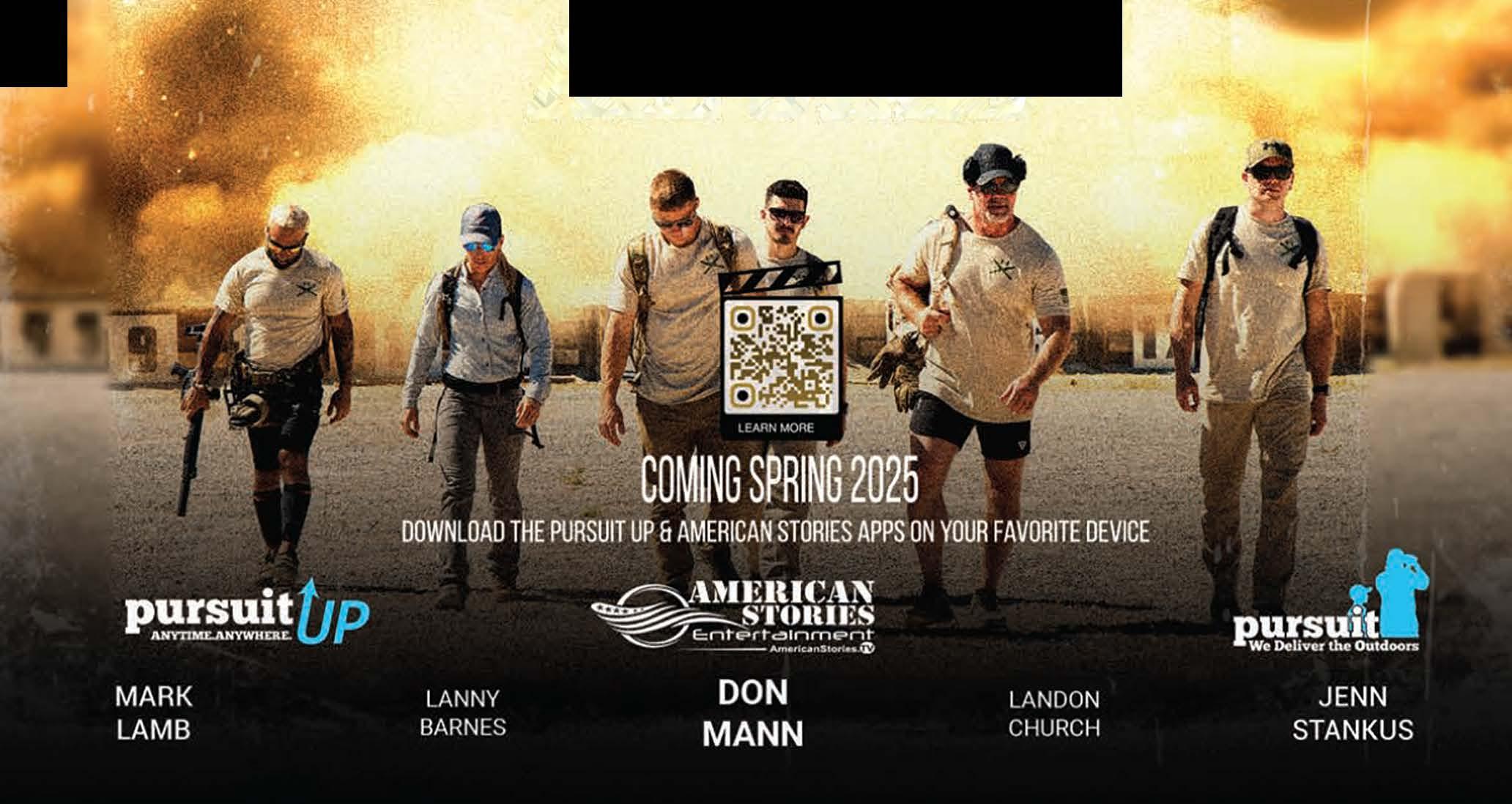



PUBLISHER
James R. Baker
GENERAL MANAGER
John Rusnak
EXECUTIVE EDITOR
Andy Walgamott
EDITOR
Chris Cocoles
WRITERS
Randall Bonner, Scott Haugen, Tiffany Haugen, Tiffany Herrington, Brian Kelly
SALES MANAGER
Paul Yarnold
ACCOUNT EXECUTIVES
Janene Mukai, Tom St. Clair
DESIGNERS
Kha Miner, Gabrielle Pangilinan
WEB DEVELOPMENT/INBOUND
MARKETING
Jon Hines
ADMINISTRATIVE ASSISTANT
Katie Aumann
INFORMATION SERVICES
MANAGER
Lois Sanborn
ADVERTISING INQUIRIES media@media-inc.com
MEDIA INDEX
PUBLISHING GROUP
941 Powell Ave SW, Suite 120 Renton, WA 98057 (206) 382-9220 • Fax (206) 382-9437 media@media-inc.com www.media-inc.com
ON THE COVER
Pink salmon don’t get the same love from Alaska salmon anglers as coho, Chinook and sockeye. But they can be a lot of fun to catch, especially if you’re not experienced, and they can even taste great when eaten fresh from the salt. (RANDALL BONNER)
CORRESPONDENCE X @AKSportJourn Facebook.com/ alaskasportingjournal Email ccocoles@media-inc.com











Kat Murphy has always found the sea and fishing intoxicating, and after working as a deckhand, she found both a boat to captain herself and a purpose. Her life as a solo hook-and-line salmon fisher in the Southeast Alaska power-troll fleet is the subject of the new short film The Grace – the name of Murphy’s vessel – from directors Moira Fett and Natalie Berger. Tiffany Herrington chatted with all three women and shared their story.
27 HELLO, JUNEAU!
Alaska’s capital city is big with the cruise ship crowd, but Pennsylvanian Brian Kelly doesn’t need a love boat to reinforce his affection for Juneau. His most recent trip there was a special one; not only was he accompanied by his son and good friends, but he was also recovering from prostate cancer. Join Brian and his crew for a play-by-play account of the trip to his most meaningful of Alaska coho and halibut destinations.
9 Editor’s Note: March Madness in Alaska
11 The Alaska Beat: News and notes from around the Last Frontier
15 Outdoor Calendar
53 From Field to Fire: Making accurate bear shots
While salmon anglers both in and out of Alaska put coho, sockeye and kings atop their bucket lists, don’t forget to think pink, particularly if you’re just getting started out in the sport or like to catch tons of willing fish. As former Situk River guide Randall Bonner explains, pink salmon make for a great option for young anglers, and if you catch them in the salt and eat them fresh, they can make for a nice meal despite their reputation as mediocre table fare.
44 CRAZY ABOUT A FOX
Predator hunting – from bears to wolves – is a part of Alaska outdoor lore and an important conservation tool for other species of big game. One of Scott Haugen’s favorite targets in this genre is Alaska’s ubiquitous fox, including Arctic, red, cross and blue varieties. “I trapped and hunted wolves in Alaska, and that was fun, but it was the white fox of the Far North that really piqued my curiosity,” says Haugen, who recaps some of his favorite fox hunting memories.
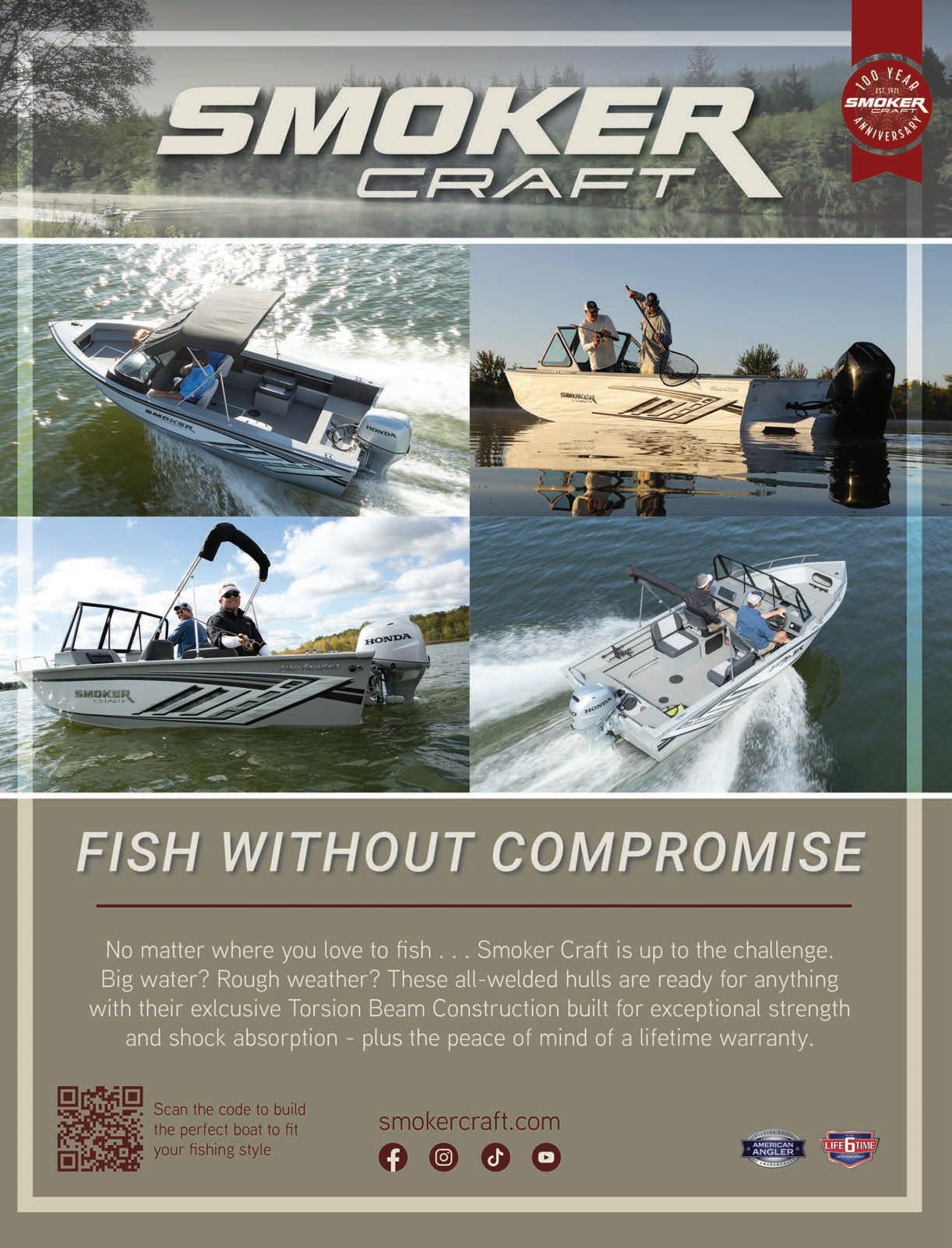

When the editor visited Finland almost 15 years ago, the sight of reindeer frolicking in the snow on a sunny winter day was a reminder that spring was on the way, much like it is for Alaskans this month. (CHRIS COCOLES)

When I made the first of two visits to the Nordic country of Finland almost 15 years ago, our trip was toward the end of winter, when the days were just starting to get a bit longer after a season full of darkness and brief bursts of daylight.
My friend and I signed up with a local outfitter to take us around the north of Finland to experience some outdoor snow adventures. I loved our guide, Saku, who drove us around the snow-filled countryside to our destinations.
On the drive, we talked about fishing, hockey, Finnish food and beer – all favorite subjects of mine. Saku also said how glad he felt that spring was on the horizon. And who could blame him? Winters are long, cold and dark in this snowy, icy corner of northern Europe.
Even at that point of early March, it felt like the sun was setting around 4:30 p.m. (We took a train even further north later in our adventure and spent time in the Arctic Circle, so I may never experience that phenomenon again.)
I recall this trip frequently – from how exciting it started and how it ended when I slipped on the ice back in the capital city of Helsinki and injured both of my legs – around this time of year. Alaskans can relate to the cabin fever aspect of a Last Frontier winter, when, like the Finns endure, days are short and outdoor activity a bit limited.
But in March, Alaska can start to literally see the light again, and two big events this month are perhaps the unofficial gateway to warmer, brighter days: the Iditarod sled dog race, which in a late decision is scheduled to restart on March 3 from the northern route in Fairbanks due, ironically, to a lack of snow, and the annual Homer Winter King Salmon Tournament, set for March 22.
Even as the state has seen some warmer-than-average temperatures and the aforementioned snow-affected Iditarod tweak, winter is still winter, and if anyone deserves a chance to enjoy some outdoor fun it’s the people of Alaska, whether that be “tailgating” along the race course as the dog sled teams glide by, or entering the Homer tournament and hoping a fat king salmon is at the end of their fishing line.
I’m sure my Finn buddy Saku is also eager to get some sunshine-filled days on the other side of the world. -Chris Cocoles
Cumberland’s Northwest Trappers Supply is your onestop trapping supply headquarters, featuring one of the largest inventories in the U.S. We are factory direct distributors on all brands of traps and equipment which allows us to offer competitive prices. Give us a try. Our fast, friendly service will keep you coming back.
We are the new home of “Trappers Hide Tanning Formula” in the bright orange bottle.
Retail & dealer inquiries are welcome.

If you are in the area, visit our store!
Request a catalog or place an order by phone, mail or on our website.

The Kenai River is among many Kenai Peninsula and Upper Cook Inlet king salmon fisheries set to be closed or see heavy restrictions this season due to “especially poor” forecasts, according to Alaska Department of Fish and Game biologist Samantha Oslund. (LISA HUPP/U.S. FISH AND WILDLIFE SERVICE)


As has been the norm in recent years as king salmon stocks have crashed at either end of the U.S. West Coast – California has faced two straight years of ocean and inland fishing closures with an unknown status for 2025 – Alaska anglers will face plenty of closed fisheries and restrictions.
In early February, the Alaska Department of Fish and Game sent out a series of press releases covering numerous waters, mainly around the fishing hotbeds of the Kenai Peninsula and others that flow into the northern end of Cook Inlet near Anchorage. Among the announcements:
• Kenai River early- and late-run king fishery closed.
• Little Susitna River king fishery closed.
• Susitna River drainages closed to king fishing.
• Anchor River and Deep Creek closed to sport fishing.
• Eagle River drainage closed to king fishing.
There are also restrictions in other river systems like the Ninilchik (no bait allowed), the Kasilof (no bait, single hook only) and Campbell Creek (catch-and-release only for the youth king fishery).
“Historic low escapements were experienced area wide in 2023-2024 and no king salmon goals were made in our management area in 2023-2024,” said area management biologist Samantha Oslund, who focuses on areas around Anchorage, including the Susitna and Little Su Rivers. “ADFG staff understands the frustrations and tremendous impact closing this fishery down has on anglers, local businesses and guides. Nonetheless, ADFG has a duty to protect, maintain and improve our sport fisheries, and without these restrictions we more than likely will not meet our escapement goals.”
Cook Inlet saltwater anglers will also be affected, with closures for all Cook Inlet waters north of Bluff Point from May 1 to August 15. Lower Cook Inlet waters will see a one-fish bag and possession limit throughout the summer (and also one fish over the first half of September).
“King salmon have continued to decline and were at historic low levels in 2024,” area biologist Mike Booz said. “These restrictions are to maximize escapements, while taking a more precautionary approach to king salmon sport harvest opportunities in these mixed stock fisheries.”
Of West Cook Inlet season-long closures, Oslund cited an expected poor 2025 run of kings, which has become commonplace in that portion of Southcentral Alaska.
“Major king salmon fisheries in this area of Cook Inlet have been closed in regulation since 2011,” Oslund added. “Several small stocks that remain open to king salmon fishing in this area are likely in jeopardy of overexploitation if left open this season.”
50-50
Per a Smithsonian Magazine report, volcanologists predict a 50-50 chance of an eruption sometime soon from 11,000-plus-foot Mount Spurr, a stratovolcano located less than 100 miles from Anchorage, based on a series of small earthquakes over the last year. The U.S. Geological Survey told the magazine that “the duration and nature of the unrest suggest that an eruption is possible.”




Alaska’s U.S. Senators Lisa Murkowski and Dan Sullivan both expressed their desire to maintain the Native Alaskan name for North America’s tallest mountain despite President Donald Trump’s crusade to return its name to Mount McKinley.

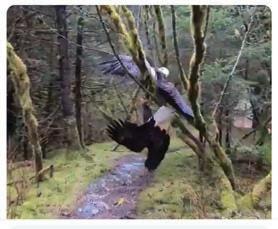

Is there anything more American – check that; more Alaskan – than a Super Bowl Sunday pregame walk and stumbling into two scuffling bald eagles with tangled talons?
We were able to make a 2-mile loop and get ahead of where the grizzly bear was headed. We had spent less than an hour glassing when he popped back out. We were going to try the same tactic as before, but this time with the wind in our favor.
We were on the bottom of a creek bed when we spotted the bear less than 100 yards away. I took my shoes off to keep quiet and used the willows to hide my movement. We made it to within 30 yards.
I had to wait for the bear to turn broadside before releasing an arrow. I didn’t make the best shot, but the bear ran straight away from us. He bedded down about 60 yards out. I had to get another arrow in him.
He bluff-charged us a couple of times, as he knew what we were. Scared wouldn’t describe the feeling we felt. It was terrifying.
The only thing worse than finding a bear in the bushes is a wounded bear in the bushes.
I was able to find a shot angle and put another arrow in the bear’s heart. Seconds later he was dead. We’d accomplished what we set out to do.
Hunting Arctic grizzlies is adventureseeking at its best. You’re in the most pristine country while chasing the top of the food chain. It’s also important to harvest predators, as the sport keeps a healthy predator-to-prey balance.
Doing so with a bow may be over the top, but it’s what some of us in the hunting world live for. -Brian Watkins

“It’s unacceptable that large-scale Seattle-based trawlers have no limits to their chum salmon bycatch, while Alaska Native, small boat commercial and sport fishermen are bearing the burdens with restrictions, prohibitions, and empty smokehouses, freezers and closed businesses. We’ll be looking for the council to take meaningful action. Establishing a meaningful cap on chum salmon trawl bycatch when there is currently none and Alaskans are going without is far from unreasonable.
”–Jackie Arnaciar Boyer, ocean justice program coordinator for SalmonState, who urged the North Pacific Fishery Management Council to continue seeking solutions to limit chum bycatch among commercial fleets in the Bering Sea following a February NPFMC meeting that didn’t produce a final determination.




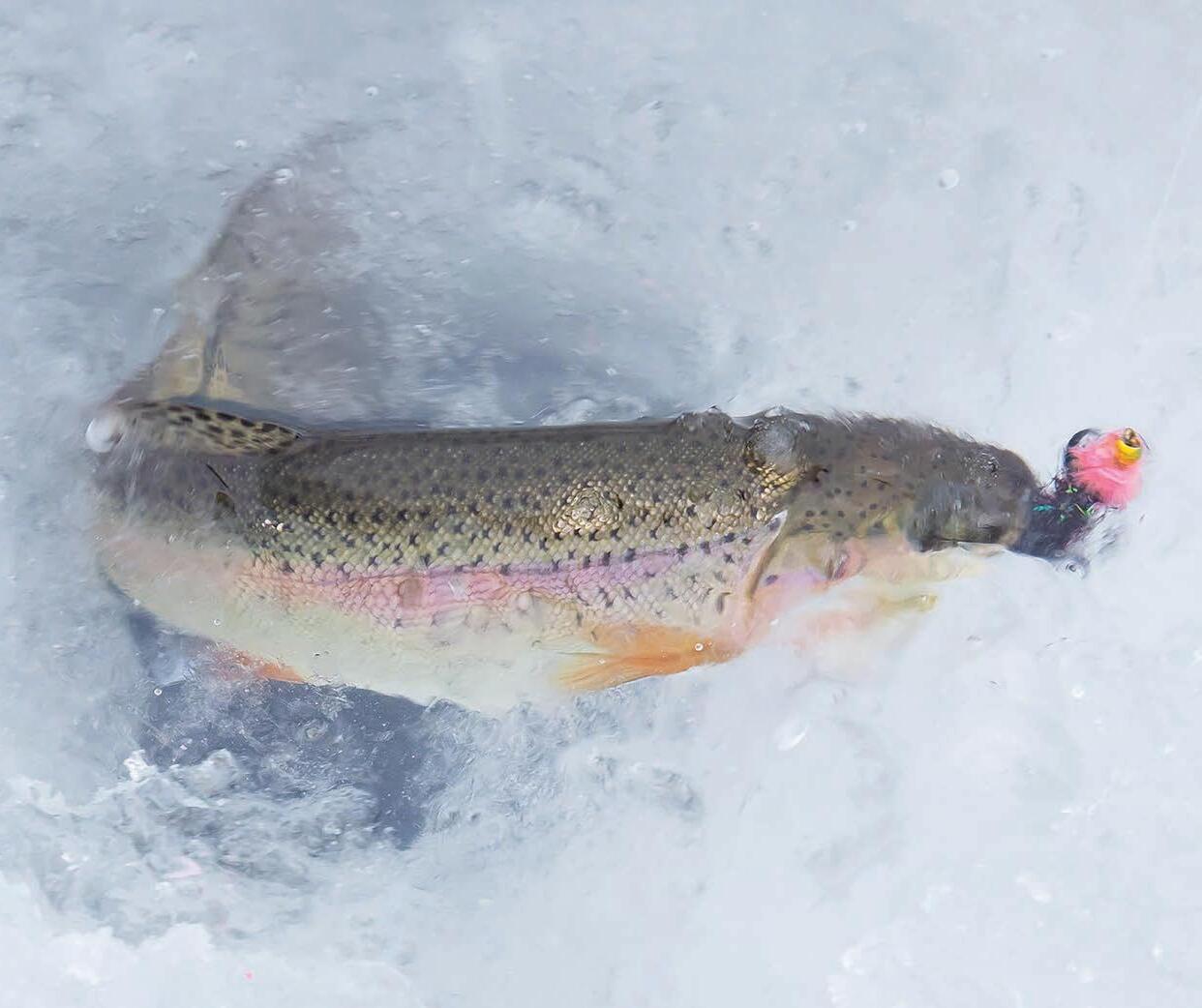
March 1
Scheduled ceremonial start of Iditarod sled dog race, downtown Anchorage (iditarod.com)
March 1 Finger Lake Ice Fishing Derby, Finger Lake State Recreation Site (scoutingevent.com/610-89884)
March 15 Spring brown bear season opens in Game Management Unit 1 (Southeast Mainland)
March 15 Resident spring brown bear season opens in GMU 3 (Petersburg/Wrangell)
March 15 Spring brown bear season opens in GMU 4 (Admiralty-Baranof-Chichagof Islands)
March 22 Homer Winter King Salmon Tournament (homerwinterking.com)
March 31 Wolverine season ends in several units
April 1 Spring brown bear season opens in GMU 6D (Montague Island; North Gulf Coast)
April 1 Spring brown bear season opens in GMU 8 (Kodiak/Shelikof)
April 30 Last day of wolf season in several units
2025 SPORTSMEN’S & BOAT SHOWS
March 7-9 Great Alaska Sportsman Show, Dena’ina Civic and Convention Center, Anchorage (greatalaskasportsmanshow.com)
April 11-13 Mat-Su Outdoorsman Show, Menard Center, Wasilla (matsuoutdoorsmanshow.com)
April 25-27 Fairbanks Outdoor Show, Carlson Center (fairbanksevents.com/fairbanksoutdoorshow)
For more information and season dates for Alaska hunts, go to adfg.alaska.gov/index.cfm?adfg=hunting.main.

















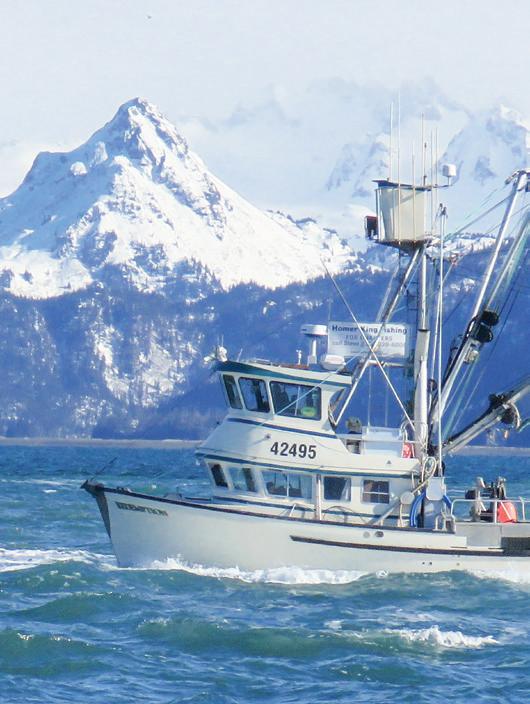

BY TIFFANY HERRINGTON
Off the coast of Southeast Alaska, where the ocean’s vastness stretches well beyond the horizon, Kat Murphy can be found solonavigating her 38-foot wooden fishing vessel, the F/V Grace
A first-generation commercial fisher, Murphy has willfully chosen a way of life dictated by the rhythm of the salmon run, the capriciousness of the sea and the relentless demands of running a small fishing business. Her story, now immortalized in the short film The Grace, directed by filmmakers Natalie Berger and Moira Fett, is as much about her individual grit as it is about the sustainability of Alaska’s troll fishery
and the intimate connection between fishermen and the natural world.
Murphy’s journey to becoming a commercial fisher began far from the icy waters of Alaska. Growing up in southern New York, she found herself drawn to water despite limited access to local waterways. In her 20s, she worked on educational sailing vessels, providing children with the opportunity to experience the ocean firsthand. “If you want people to care about our oceans and ecosystems,” Murphy reflects, “you have to provide them access to it.”
Her passion for maritime life led her
to the Northwest School of Wooden Boatbuilding in Washington State, but the shipyard industry proved an ill fit. “I wasn’t willing to work all year on land or fight various forms of sexism that put up barriers to entry,” she recalls.
In 2017, Murphy’s path took a pivotal turn when she landed a deckhand job in Alaska’s power-troll salmon fishery. The experience ignited a spark that would change her life.
Just a year later, armed with determination and a modest savings from her deckhand earnings, Murphy purchased the F/V Grace. The vessel had been sitting idle for years in Washington’s Bellingham Harbor, but Murphy saw its
Murphy developed a love for the sea, boats and fishing, and she paid her dues as an Alaskan fishing deckhand.

potential. With the support of friends and family, she readied the boat for the 700mile journey up the Inside Passage and began her career as a captain.
“Nothing really prepared me to go from deckhand to captain, let alone figure out how to catch salmon,” Murphy admits. “It was a brutal learning curve.”
Fishing solo on the Grace demands physical endurance, mental fortitude and resourcefulness. “When you fish alone, you don’t really stop moving,” Murphy says. From steering the boat through fog and rough seas to icing fish in the hold and preparing meals on the fly, her days are a constant balancing act.
“I’ve gotten pretty creative about feeding myself,” she adds with a laugh, describing her “gear nachos” – a quick meal assembled during busy fishing runs.
Despite the grueling pace, Murphy finds moments of profound beauty and fulfillment on the water. “The gratitude I feel for a calm, sunny day or a full moon lighting up the night is indescribable,” she says. These moments remind her why she endures the hardships of fishing: the connection to Alaska’s wild places and the satisfaction of providing
high-quality, sustainably caught salmon to her customers.
But the challenges extend beyond the physical demands of fishing. Murphy recalls one particularly difficult season when she had to haul out her boat with one hand in a cast, relying on the support of friends to complete the job. “I wouldn’t be where I am without my community,” she says.
Therapy, both talk-based and somatic, has also been instrumental in helping her manage the stresses of life at sea. “A healthy brain handles stress and decisionmaking so much better on the fishing grounds,” she notes.
For Murphy, the roles of fisherman and environmentalist are not opposing but intertwined. “Fishermen rely on healthy forest and ocean ecosystems to sustain the salmon runs that feed us,” she explains.
Southeast Alaska’s troll fishery is a model of sustainability, employing a traditional hook-and-line method that ensures each salmon is individually caught, bled and iced. This meticulous process produces some of the highestquality wild salmon on the market, all while minimizing environmental impact.
Murphy’s work is regulated by the Alaska Department of Fish and Game, which sets strict escapement goals to protect salmon populations. “We all respect these fish and this resource,” she says. “We want to protect these runs for future generations.”
This respect extends beyond her role as a fisherman. Murphy’s connection to her surroundings is deeply personal. “Being on the front lines, observing the natural world day in and day out, makes us conservationists in a way few others can be,” she says. Her lifestyle, dictated by the cycles of the salmon, exemplifies a harmonious balance between human activity and environmental stewardship.
The Southeast Alaska troll fishery itself is a remarkable example of sustainability in action. Unlike largescale industrial fishing operations, the troll fishery operates on a small scale, with boats rarely exceeding 52 feet in length. Fishermen like Murphy use hydraulic gurdies to lower and raise high-tension wire with hooks and lures spaced throughout, targeting salmon one by one. The process is laborintensive but ensures the highest-quality catch while maintaining the ecological balance of the region.



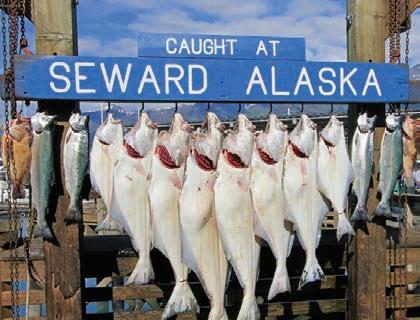

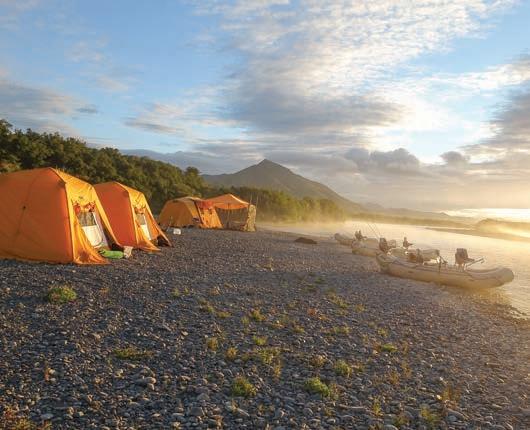













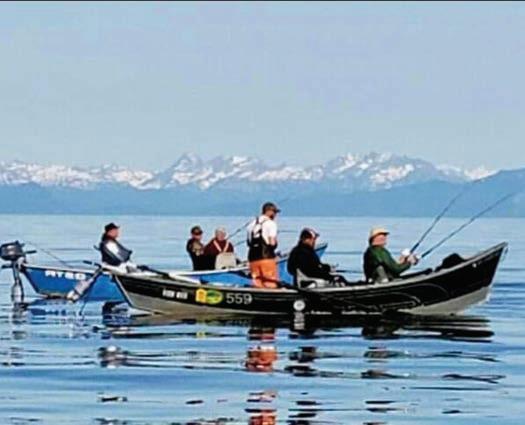



Murphy saved her deckhand paychecks to help fund the purchase of her own boat, the F/V Grace. “Nothing really prepared me to go from deckhand to captain, let alone figure out how to catch salmon,” she acknowledges. “It was a brutal learning curve.” (THE GRACE FILM)

Filmmakers Natalie Berger (left) and Moira Fett collaborated on the project that follows Murphy's life both onshore and at sea. “For Kat, being a fisherman and an environmentalist are inseparable,” Fett says. “Her livelihood depends on the salmon’s annual return, so environmental stewardship becomes both a moral obligation and an act of self-preservation.” (


When filmmakers Berger and Fett met Murphy in 2020, they were immediately captivated by her fiercely independent spirit and the emotional depth of her journey. “Kat was entering her fourth fishing season,” Berger recalls. “She was still navigating the steep learning curve of her trade, experiencing profound growth along the way.”
Over the course of two years, the filmmakers documented Murphy’s life on and off the water, crafting a cinematic portrait of her world. Shooting on the Grace presented unique challenges, from cramped quarters to unpredictable weather. “The boat was small, but that limitation forced us to focus closely on Kat,” Berger says. “Her challenges and victories became the heart of the story.”
Fett adds, “For Kat, being a fisherman and an environmentalist are inseparable. Her livelihood depends on the salmon’s annual return, so environmental stewardship becomes both a moral obligation and an act of self-preservation.”
Driving the Grace through the Inside Passage from Washington to Alaska was one of the most impactful experiences for Berger. “Serving as part of Kat’s
crew deepened my understanding of her work,” she says. “The level of alertness required to navigate the vessel and the responsibility of being at the helm were humbling.”
The journey also offered breathtaking moments, such as witnessing the interplay of light and landscape in Alaska’s remote wilderness. The filmmakers were equally struck by the emotional layers of Murphy’s story. “Her passion for her work and her resilience in the face of challenges inspired us deeply,” Fett says. They chose an observational style for the film, allowing the raw beauty of Murphy’s life and environment to speak for itself.
“Both power trolling and verité filmmaking require patience and attentiveness,” Berger notes. “We wanted the film to reflect the quiet dedication that drives both practices.”
The Grace is more than a documentary; it is a testament to resilience, sustainability and the enduring bond between fishermen and the natural world. For Murphy, the film captures not only her life but also the broader story of Alaska’s independent fishermen.

“We are small, family-owned and -operated boats,” she says. “We fish in all types of weather, year after year, because we love it and because we are responsible for feeding people.”
Berger and Fett hope the film will inspire audiences to think critically about where their food comes from and support sustainable practices. “Through Kat’s story, we aim to provide a nuanced look at what it truly means to fish sustainably on a small scale,” Berger explains. “We hope to inspire deeper reflection on how we live in harmony with the environment.”
Fett highlights the film’s observational style, which mirrors the patience and attentiveness required in both power trolling and filmmaking. “Kat’s meticulous process, her adherence to regulations and her connection to the environment challenge common perceptions of commercial fishing,” she says.
Murphy’s resilience extends beyond her work at sea. The challenges of running her direct-market seafood company, Katfish Salmon Co., require her to juggle multiple roles: fisherman, business owner and advocate for sustainable fishing practices.
“Getting to hand out and ship fish that I’ve carefully caught all summer is one of the most rewarding parts of my work,” she says. “The connection and traceability
I can provide my customers is vital.”
As Murphy continues her work on the Grace, she remains committed to her mission of providing high-quality, traceable seafood. Despite the hardships of this demanding lifestyle, Kat credits her persistence and the lessons learned over the years as key to her growth as a fisherman and business owner. Each challenge has shaped her ability to adapt and thrive in an ever-changing industry. Murphy’s story, like the film that bears
her boat’s name, is a testament to the power of perseverance and the beauty of a life lived in tune with nature. For those who watch The Grace, the hope is that viewers not only glimpse the challenges and rewards of a fisherman’s life, but also come to appreciate the vital role of sustainable practices in preserving Alaska’s wild resources for generations to come.
In addition to inspiring audiences, Murphy sees the film as a time capsule of her life and the vessel she cherishes.
“The Grace is a special boat, built in 1946 in Seattle,” she says. “Many boats













“Fishermen rely on healthy forest and ocean ecosystems to sustain the salmon runs that feed us,” Murphy says. “We all respect these fish and this resource. We want to protect these runs for future generations.” (KAT MURPHY)


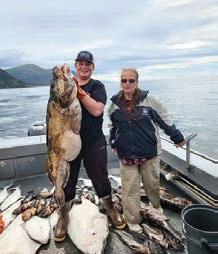
like her are slowly being lost to time. Having footage of the Grace is important from a historical standpoint because it represents a way of life that still exists.”
For Berger and Fett, the film’s impact lies in its ability to spark conversations about sustainability and the resilience of independent fishing captains. “There’s something mythical about how Kat’s life revolves around the salmon run,” Berger reflects. “It’s a cyclical, interconnected story that we hope resonates with viewers on multiple levels.”
As the F/V Grace continues to navigate Alaska’s open waters, it carries the legacy of those who dedicate their lives to this demanding and rewarding way of life. By sharing her story, Murphy ensures that the voices of independent fishermen remain heard and valued in an ever-changing world. ASJ
Editor’s note: For more information about the short film The Grace, visit upstreamgrace.com/the-grace. Learn more about Kat Murphy’s seafood company at katfishsalmonco.com. Tiffany Herrington is a writer based in the Seattle area.




Come









Pursue







Coming off successful cancer surgery, author Brian Kelly (left) was all smiles after landing this keeper halibut on a trip to Juneau with his son Mason. It was Kelly’s second Alaska adventure of the year. (BRIAN KELLY)

BY BRIAN KELLY
While lying in a hospital bed at Ohio’s Cleveland Clinic anticipating the impending prostate cancer surgery, my thoughts drifted off to my happy place in Juneau: Sheep Creek in early September. I swear that the unmistakable scent of the salty sea air was hanging in the hallway as I was waiting to get rolled into the operating room. As I closed my eyes, I had visions of the tide rolling in, with schools of fat, feisty coho charging up
the Gastineau Channel after gorging on herring in the Gulf of Alaska all summer.
After making 15 trips to Alaska since 2011, from the Kenai Peninsula to the Mat-Su Valley and a few stops along Southeast’s coast, the Juneau coho scene really stuck with me after an exploratory trip in 2016. The place felt remarkably familiar, like another happy place back in my home state of Michigan, Platte Bay.
Nestled in the northwest corner of Michigan’s Lower Peninsula, this natural
gem is loaded with pines on the peaks of massive sand dunes, which seem to drop right into the depths of northern Lake Michigan. This was the birthplace of the Pacific salmon introduction into the Great Lakes, and where I first fell in love with coho.
CHILLS OF EXCITEMENT RAN down my spine when I first arrived at Sheep Creek and walked out to the channel marker at low tide. The misty mountains across
the channel were stunning to me, as was the view of the snowcapped summits to the south. The very first coho I landed out there did what coho love to do: hit right off the rod tip. My spinner was less than 3 feet away when it disappeared, and all hell broke loose.
I was head over heels for this place from that very moment, along with the killer bite that materialized with the incoming tide. I found my place where I could cast spinners and jigs to stagger fish and fill a freezer when the bite fired up, thanks to the generous daily limit in the salt. It is a slice of coho heaven that, for me, would become an annual destination for myself and my group of Great Lakes salmon junkies.
My surgeon was confident we could knock out the annoying tumor that was hosting the cancer, meaning I would be back to a normal life in a few months. No chemotherapy, no radiation. Surgery, recovery, with the goal of getting back to Alaska at some point in the year. My wife Anne and I were both able to take time off from work during my recovery period, and our already strong bond was fortified even further through this entire experience, a process that involved a year of tests, scans, biopsy and visits
with a couple potential surgeons until we got to the point of figuring out a plan to deal with this issue. It is a complete gut punch when a doctor says that dreaded six-letter word no one wants to ever hear. But my wife was by my side during the entire journey, and I cannot thank her enough for all she did.
As my strength returned and good news came in the form of PSA tests that confirmed the cancer was gone, we both breathed a sigh of relief and began discussing trips we would take together. We both love to travel, but she had never been to Alaska. So, that was first on the list. We had an amazing nine days in Ketchikan in June (Alaska Sporting Journal, February 2025). The weather was spectacular for Southeast Alaska, which meant it only rained for half the trip! Whales, bears and seals were out in force. We never ate any fowl or red meat on the trip, as we adhered to a seafood-only diet. Why go to Alaska and eat chicken nuggets when you have the freshest fish in the world at your fingertips?
While I did pack some fishing gear for the trip, the hatchery kings refused to show up on time, so Anne and I did all the tourist stuff that I never get to on my usual fishing trips. And it was glorious.
We both cried in each other’s arms when it was time to leave. Alaska had worked its magic on her, like it has on me.
IT GOT INTO MY thick Scotch/German head that if the surgery was a success and I was mobile by spring, a second trip to Alaska was in order. This trip would be back to Juneau, as I did not want to miss the big coho plant Douglas Island Pink and Chum Inc. (DIPAC) unleashed in 2023. I have seen what the usual million-fish plants provide in terms of returning adult coho, and an additional 300,000 could make for a special run.
I knew I would need assistance this trip, as while my mobility was back, my strength and stamina were slow to catch up. So I enlisted a pair of sherpas, my oldest son Mason and my buddy Sean. Both had fished a bit – Mason more so, as he has accompanied me on many steelhead trips around our local streams in northwest Pennsylvania. But I needed strong backs to aid with hauling fish around, so it was agreed that I would play guide on this trip and the boys would do the heavy lifting.
When we arrived on Labor Day, word around town was



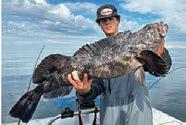
















Still on the mend, Kelly was accompanied by his oldest son and a buddy for physical support, and they also linked up with friends from Michigan and Texas. All had a fun-filled afternoon of bottomfishing outside Juneau. “Our group was able to spot a pod of orcas on the ride back to the dock,” Kelly writes. (BRIAN KELLY)

that the fish were in thick at Sheep Creek, and so were the crowds. I knew I could not throw my boys right into the fire, so we set up away from the shoulder-to-shoulder crowd for some elbow room and to get the boys acclimated to the rigors of casting and retrieving spinners for hours on end.
I managed a couple quick bites as the tide started to move and my crew became uneasy as dry land began to disappear. So, we packed it up and headed to the north side of Douglas Island to fish the other side of Gastineau Channel. While this area does not get the concentration of fish like Sheep, it provides a less crowded experience and some breathtaking views as you head out towards False Outer Point. As the tide began to relent, we were able to get to one of my favorite little spots on the island, which tends to fish well on a falling tide.
While it took a little coaxing to get my team to wade through waist-deep water to get to our destination, it paid off with an immediate bite for Sean. His first coho landed in Alaska led to hugs, cheers and pictures. Mason followed up with a trifecta of chrome in short order, while Sean landed the biggest fish of his life just before
the tide cleared out.
Getting everyone on the board on day one was a fantastic way to kick off the trip, and it also meant it was time to break out the filet knife and get to work. The routine was much the same the next few days, with a few groups of friends from Michigan and Texas flying in to join the fracas. The morning bite for the next couple of days was on fire, which allowed everyone to fill their stringers and load up on the bright orange-fleshed filets we all crave in our group. We spent the afternoons at the local breweries to celebrate and trade stories from the day, and there were stories. Oh, the stories.
Maybe the highlight of the trip was watching my pal Hunter from Texas realize that his mother was about to be stranded with the incoming tide, so he stopped fileting and high-stepped it out to the end of the peninsula to make sure Mama Tex got back in one piece. We all applauded his effort upon their safe return to dry land, as we stood around our makeshift cleaning tables laughing our heads off at what had just transpired.
ON THIS TRIP, WE put together a six-pack
halibut charter at the end of the week. Since I had a couple of newbies and Hunter had some relatives who had never fished halibut before, it was a good time to get everyone together and see this great area from the water.
Our run out of Auke Bay was a short one, and it did not take long for my son to point west and ask, “Was that a whale?” Sure enough, a pod of humpbacks was moving up the far shoreline, and we could see their spouts in unison. Soon, they were close enough where we could see their entire tail as they dove back to the depths.
The weather was ideal, and the bite fired up right on the first drop. Sean had the hot rod and even landed a double! Then came the guessing game: Do we keep throwing back smaller fish in hopes of a larger one? Ahh, yes, the age-old nonresident halibut charter fishing dilemma!
We eventually put a 30-incher in the box and started to keep whatever came over the rail, as the clock was quickly becoming our enemy. Team Texas was able to land a pair of sizable Pacific cod late in the trip, so we were all assured of having a few filets to take home.
As the time came to reel up the lines,





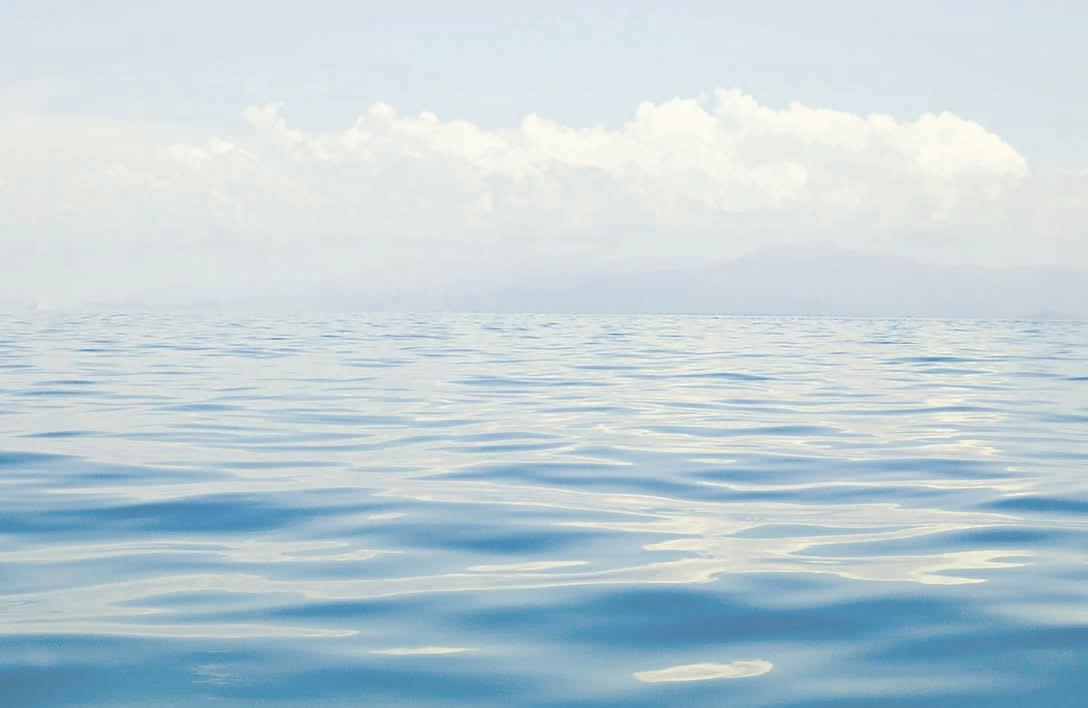







with a teener buck silver salmon that ate the spinner just off his rod tip, beached itself, turned back into the water and tried to spool him. His dad calls it “coho doing coho things.”
our captain came out on deck to inform us of a special treat during the ride back to the dock. I had a feeling what was about to happen and sure enough, after a short, quick boat ride, there they were – orca dorsal fins! Talk about a treat! It was an incredible sight as a pod of three orcas made its way down the channel, slowly rising to the surface, spouting and diving back down. To be able to see these magnificent creatures on this outing with my son and my friends was

truly a treat that I will long cherish.
I TEND TO GET strange looks when I tell people Juneau is my favorite place to visit in Alaska. “Isn’t that the capital?” Yes. “Aren’t the streets crowded with (cruise ship) people?” Yes.
But away from the politicians and bewildered throngs of tourists lies a place that holds a special strain of coho, thanks to some genius work by the folks in charge of the DIPAC hatchery. The

Kelly was thrilled to be on knife duty in Juneau; a cordless electric filet knife has become his best friend on freezerfilling trips. For all that he endured during his cancer bout, getting back to Alaska twice last year to fish with family and his buddies was special.
Taku-strain coho they have developed are mean and nasty, like no other coho I have known before.
The sights and sounds around town are also like no other. From the hungry seals awaiting a free meal from the cleaning tables at the hatchery, to that enormous chunk of ice in the mountains outside of town, Juneau checks a lot of boxes for me.
I enjoy your town immensely, Alaska. I miss the place and people already. ASJ
Scott Perkins is the owner of Jerry’s Meats and Seafoods in Juneau. The place is one of those local institutions where customer service is served Alaska style and doesn’t always mesh with Lower 48 expectations. For as long as I have been going to Juneau (since 2007), Jerry’s has been the place for processing fresh and frozen seafood from all over Alaska, and it also features smoked meats aplenty. For the most part, Scott is a pretty happygo-lucky fella, but he tends to develop an
attitude when they get busy/overwhelmed with processing requests. Last fall, the coho were late. Typically, they show up around town and stage in the outer waters where the locals can troll and fill freezers to their heart’s content.
But the fish didn’t follow suit in 2024 and instead they all showed up at once right around Labor Day. So all of the town’s residents and seemingly all of the visiting anglers were hammering fish on a daily basis and dropping off filets to be processed.
Scott got to the point where he couldn’t take it anymore and turned away business, including members of our group and even yours truly. That is, until I showed up asking for our fish when we had another processor lined up. Our pal quickly changed his tune and went about his business handling our fish.
It all worked out in the end, and usually does, but sometimes you just gotta put up with the Alaskan attitude from time to time. –BK





















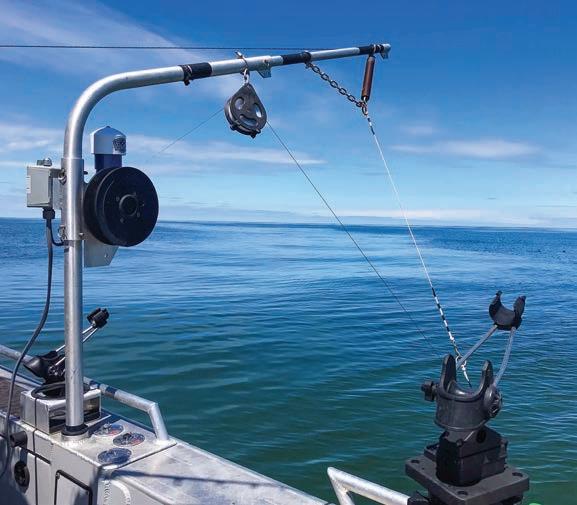
n 1992, after retiring from his work as a crab fisherman in the Bering Sea, Buck Setera began developing a line of sport crab and shrimp pots for his own use. Soon, other fishermen noticed how well his pots were catching shellfish and inquired about buying some. As the pots became more popular, customers began to express a desire to have a way to haul their catch up from the bottom, and thus EZ Puller’s electric pot/trap haulers were born.
“When Buck finally decided to retire about 10 years ago, having been a dealer for his products for many years and knowing our fishing and boating background, he asked if we would be interested in taking over,” explains owner Guy Richards. “So my wife Cynthia and I decided to take it on. With the additional help of our son Keegan, we build our crab and shrimp traps by hand, all made with ‘Made in the USA’ components. As for pot haulers, we have made some small changes to the original design, but since they have been working for 25 years or more just fine, we have left them alone. With the addition of some specialty davits, we are proud to offer the most diverse lineup in the industry, something for almost everyone. We build each unit by hand and offer the ability to do custom products for our customers as well.”
Since taking over the Santa Cruz, California-based company, the Richards family has continued to build up the business by selling high-performance products that are simple yet robust, ensuring they can handle heavy loads effectively.
“The user-friendly designs and safety features enhance the overall experience, making them suitable for various marine applications,” says Richards. “Additionally, the high-performance motors and quality materials contribute to their longevity, which is often a key factor for customers in selecting pot haulers.”

Richards believes that customers also appreciate that he and his family are fishermen and have over 50 years of personal on-the-water experience. “We understand their needs and can help them get their own boats set up correctly,” he explains.
One of EZ Puller’s most popular products is the EZ-HT1, a performance electric pot hauler designed for versatility in various boat applications, focusing on user safety and durability and hauling speed. Its robust construction includes a 1.5-inch schedule 80 aluminum davit rated at 225 pounds, powered by a reliable 2.4-horsepower 12-volt motor retrieving at up to 160 feet per minute. The design features a sealed cast aluminum gearbox with roller bearings, ensuring longevity through strong steel and bronze alloy gears housed in a synthetic oil bath.
For those fishermen not requiring the high performance of the HT1, EZ Puller’s EZ-E80X was designed for efficiency in pot hauling, featuring a durable 1.9-hp motor and a sealed aluminum gearbox for longlasting performance. With a pulling speed of up to 140 feet per minute, the EV-E80X uses the same 1.5-inch schedule 80 aluminum davit with a capacity of 225 pounds.
“New this season we are introducing our HT PRO series pullers; they will be offered in the 1.5-inch and 2-inch, as well as a 2.5-inch version,” says Richards. “These new units will feature our new design, Adjustable Anodized aluminum sheave system. When combined with a new more effective hands-free line tensioner, with an industry-first line stripper, it will offer better retrieval control and safety. We are also introducing a new waterproof switch and high amp switch solenoid mounted in a cast aluminum box.”
“So,” he adds, “after years of extended use and feedback from our customers, these new units will be targeted at the fishermen who want the very best, most
reliable and safest products.”
In addition to their lines of electric and manual haulers, EZ Puller also offers sport salmon downriggers and trolling downriggers for commercial fishermen, as well as specialty haulers for research vessels and hoists. Customers run the gamut from sport and commercial fishermen to law enforcement and military personnel, and even, according to Richards, filmmakers. “Over the years, it’s been pretty cool for a little shop like ours to see so many of our products on boats that are used during the filming of feature movies,” he says.
For more information about EZ Puller and the company’s wide range of products, visit ezpullerinc.com.



BY RANDALL BONNER
Between sockeye and silver salmon runs, the lodges in Yakutat usually take a moment to catch their breath between catching fish.
During odd-numbered years, hordes of pink salmon swarm in around late July and early August, making it difficult to continue targeting sockeye and bringing that fishery to an abrupt end. While the timing of pinks’ arrival in the lower river still allows for an extension of upper river sockeye
angling, the inevitable pink-pocalypse engulfs the entire 14-mile float from Nine Mile Bridge to the takeout near Strawberry Point.
Humpies are arguably the most aggressive salmon species, especially when you throw something pink at them. They turn to their spawning phase quickly after entering freshwater, giving them a bad rap as table fare. However, pinks caught in the lower river or from the salt are a great bonus fish to add to
the bag with sockeye in late summer or coho in early fall.
To get a quality pink filet, there are a few factors that need to align. First, the fish have to be chrome and fresh from the salt to have firm, flavorful flesh. Catching them in the bay is ideal. When they’re staging to enter the river, they’ll be thick in the salt and hard to keep off the hook.
While trolling offshore is the easiest way to target them in the salt, the
unique landscape of Yakutat lends itself to tidal sloughs that flow saltwater around islands. The legendary Ankau Bridge is a community hotspot for locals to drop their presentations from above and target the fish below.
There’s just something oddly entertaining about looking 20 and 30 feet down at schools of fish wandering around, hooking up, and trying to keep them out of the pilings before yarding them over the rail. The accessibility and minimum skill level involved draws crowds of kids from the village looking for a good time and easy pickings.
Besides choosing super salty pinks for harvest, the other half of acquiring a quality pink filet is cleaning, packaging and freezing them quickly. The best way to eat a pink filet is when it’s still fresh. Glacier Bear Lodge (glacierbearlodge .com) offers a “Catch of the Day” option for guests to bring in their catch early and have the kitchen staff prepare it for dinner. Not only is this the freshest possible way to try a pink salmon filet,







Kodiak






★ New patented EASY to use Bobber With A Brain Jr., ONLY automatic slip bobber in the world that requires no line stopper! You can fish 1 & 2 feet off the bottom automatically any depth, even 50 feet deep and it will not drift in 30 mph wind or jet ski waves!
★ Works in combination with any slip sinker and allows you to fish on and off the bottom at the same time on the same crappie or perch type rig!



Wild berries ripen during the late summer alongside blooming fireweed, creating a forager’s paradise. If you’re brave enough to compete with the bears for salmonberries and disturb the mosquitoes roosting in the huckleberry branches, you can collect enough bounty to send back home frozen in your fish box to make homemade jam. (RANDALL BONNER)

if you’re on the cusp of sockeye or coho season, you can prioritize the best quality table fare to ship back home.
While most Alaskan residents might be spoiled by the abundance of richflavored sockeye, the mild flavor of pink salmon is easily superior to most trout and farmed Atlantic salmon, which dominate the grocery store seafood counters of the Lower 48.
Some of my favorite trips as a Situk guide were taking families on trips to intentionally target pink salmon. Any other species that went into the bag limit was a pleasant surprise rather than an expectation. Seeing kids rope in fish after every cast and make their Alaskan adventure dreams come true is hard to beat.
There are big bag limits for Lower 48 fishermen who just want to fill their freezer, which keeps the fish processors at the lodge busy. Savvy anglers know not to take resources for granted, especially when that resource provides subsistence, entertainment and employment.

Young Payton holds a super-sized pink for the camera. The fish inhaled a twitching jig tied by the author, who says that targeting pinks is a great option for kids and inexperienced anglers. (RANDALL BONNER)



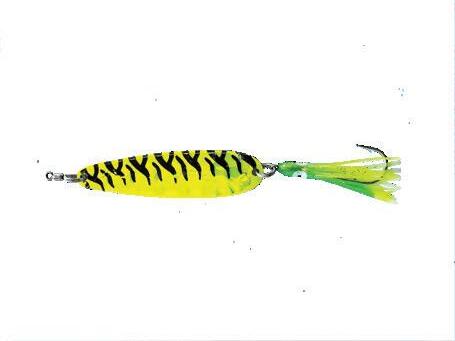






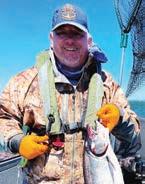



“Some

The pace of this fishery is a little different too. Not having to play hopscotch with a ton of other boats redirects our priorities in the right place to simply enjoy the ride and our time on the water.
The availability and accessibility of DIY adventures is easier to come by for independent anglers as well. Remote Southeast Alaska streams like Tawah Creek provide opportunities to fish where you’re more likely to share space with a brown bear than another angler.
While pink salmon aren’t at the top of the list for most anglers planning a trip to Alaska, the fishery offers some great opportunities for both less experienced and younger anglers. Not only are they plentiful and easy to catch, but there’s far less traffic on the river during those transition times between sockeye and silver season. There’s also the opportunity to possibly catch all three species, as well as kings in the salt. Booking saltwater charters is easier when there’s not as many guests to compete with for seats. And last but not least, when booking is slow at the lodges, you’re quick to get a drink at the bar. ASJ












BY SCOTT HAUGEN
You better move up there now while you’re single, because no woman would ever follow you to the Arctic!”
Four months after Tiffany said these words to me, we were engaged, and seven months after that we were married and living in Alaska’s high Arctic. That was 34 years ago, and yes, we’re still happily married.
For me, ever since I was a boy I wanted to live in the Alaskan Arctic. I wanted to learn how to hunt and trap from the indigenous Iñupiat people, who are among the toughest souls on Earth. I simply wanted to experience wildlife in one of the harshest habitats on the planet.
I started running my own trapline while
in fourth grade in 1974 near my boyhood home in Oregon. Predators intrigued me then and still do, no matter where in the world they roam. Whether trapping or calling predators, cats and canines have always been the most compelling to me.
But one of these critters always stood out as the most interesting of all. Yes, I trapped and hunted wolves in Alaska, and that was fun, but it was the white fox of the Far North that really piqued my curiosity. Going through seasonal color phases, it was the pure white, winter pelage of the Arctic fox that enthralled me, and it’s what started my love of pursuing fox in Alaska more than three decades ago.
WHITE FOX
I began learning the ways of the white fox as our first winter closed in on Point Lay, then home to less than 100 people. Jobs as school teachers took Tiffany and I there; I was the only high school teacher, she taught third to eighth grade. We taught every subject and did our nine months’ worth of grocery shopping at once when passing through Anchorage. There was no store in Point Lay, which is on the Chuckchi Sea, at the time.
We had one TV channel, RATNET (Rural Alaska Television Network), no flush toilets and the internet had yet to be developed. Life was good. How good? One winter we went 199 consecutive
A blue fox taken on Saint Paul Island. A color phase of Arctic fox, blues were big in the fur market because they take on many color variations, like this one that was more brown than blue. (SCOTT HAUGEN)

days where the temperature never got above zero. Add two months of near total darkness to that and hunting and trapping in these conditions becomes a challenge. I quickly learned that when calling Arctic fox in subzero conditions, diaphragm calls were the way to go, as they didn’t freeze.
One winter I monitored a walrus carcass on the beach for three months before the snow fox finally found it. Setting up against the jumbled pack ice in the cold daylight late one February day, 150 yards from the carcass with not a breath of wind, I was surprised how far my sounds carried.
Alleyways had been created by the folding of the pack ice, and it was those corridors I targeted when calling. I
was shocked when the first white fox appeared from seemingly nowhere after only two minutes of calling. A shot with a .22 found the mark.
Over the next few days I took 11 Arctic fox near that carcass before a polar bear took over. Once the bones were scattered across the frozen ocean – and mostly consumed – the white fox moved on. I had my best calling near food sources like that.
Even as they approached a call, the polar fox continually moved about, always fidgeting and looking. But hunger and curiosity routinely got the best of them.
One midwinter day I was using a flashlight to track those coming to my call. One white fox was so jumpy I couldn’t get a shot. I wished I had my shotgun. When
the fox busted me it sprinted down a gully of snow, the same one I had walked in on.
As I approached my snowmachine to head to another place, the little fox wouldn’t leave it. I couldn’t get a shot, and the pure white fox crawled in and burrowed between the track of the snowmachine and the seat as I walked closer. I had to start the machine to get the darn fox out of there, and when it bolted I was ready. I dropped it with a string of shots from my semiauto .22.
Twenty degrees below zero was my typical cutoff point for venturing out, but on calm days, which were rare in the Arctic, minus 30 degrees felt tolerable. Still, you had to closely watch the flat horizon for storms because they could materialize in seconds and be on you in minutes. More than once I set out under calm conditions, only to be consumed by temperatures in excess of minus 50. At that point, survival becomes the priority, not hunting.
One time I got stuck in a storm when winds gusted over 70 mph and temperatures plummeted to 62 below zero with the windchill. I had to turn my sled on its side and take shelter behind it. The rising moisture from my breath beneath my down facemask would collect on my eyelashes, freezing my eyes shut. I wasn’t sure I’d survive that night, but after a few hours the storm let up. I made it home with only minor frostbite on my hands and face.
In 1993, Tiffany and I moved to Anaktuvuk Pass, in the heart of the Brooks Range, where we continued teaching. The Iñupiat village of about 300 people at the time was the last settlement to become established in all of North America. Many of the elders shared stories of seeing their first airplane, meeting the first white man, and of people starving because the caribou didn’t migrate through in some years. They were a nomadic people, following caribou through the Brooks Range, some of the most rugged terrain I’ve set foot in anywhere in the world.
On the northern slopes of the Brooks Range, predators and prey were ubiquitous. Caribou herds numbering into the tens of thousands were common in the mid1990s. We’d often watch moose, grizzly bear and Dall sheep from our living room



window. Grizzly bears were abundant, as were wolves, wolverine and lynx. Red fox and cross fox were around, but their numbers seemed to fluctuate. Arctic fox didn’t venture this far inland.
One winter I called in a cross fox that a local man shot. I also lured in a handful of red fox during the four years I was there, but they were fairly scattered compared to other places in Alaska.
For more than 30 years I’ve traveled throughout much of Alaska, hunting and fishing along the way. Southwest Alaska is my favorite place to target red fox, as they’re aggressive to the calls, always
hungry and populations are solid.
While hunting brown bears during fall on the upper end of the Alaska Peninsula near the village of Egegik, red fox tracks littered the beaches. Every night it rained, and every morning there would be fresh tracks in the soft, sandy soil. Once I filled a brown bear tag, I had a few days to hunt waterfowl and call fox.
Setting up in creek beds at low tide using an electronic call was the ticket. Hungry, curious red fox would often dart right into the speaker, sometimes biting it, sometimes sitting inches from it while trying to figure out what it was. The fox
in this area had never been hunted; that made me look good.
Last fall, I was calling red fox outside of Egegik, as well as Cold Bay, and the number of reds that responded to mouth calls continued to amaze me. The good old days of fox calling are alive and well in remote Alaska – no question. Nowadays, most of my calling for red fox is for photography purposes, not hunting them.
But the biggest red fox I ever hunted were on Kodiak Island. I’ve hunted the island multiple times for deer and sea ducks. Here, red fox are active well into December.
The first red fox I saw was roaming the beach late one November morning. It shimmered brilliant orange and red as it scampered from rock to rock, nose down, in search of seafood that had washed ashore. I was duck hunting and had nestled into a rocky point. Like many of us do when we see a predator, I pursed my lips and made long, high-pitched kissing sounds.

When the fox stopped and looked at me, I figured it would bolt the other way. Instead, it waltzed right up to me. The shot was easy, but what I’ll never forget is the size of that fox. Figuring it was just a fully prime dog, when I lifted it off the rocky beach, it was heavier than some coyotes I’d shot. No doubt, these seafood-eating predators live well, and they can amass the weight to an impressive degree.












Outfitters since 1994 100% American owned $1475 for a 3 day High Volume Dove Hunt THROUGH December, 2025
While bowhunting deer on Kodiak Island one winter, I saw a red fox mousing in some tall, yellow beach grass. Moving into position, I set up and started calling. No matter how hard I tried, that fox wouldn’t leave its quarry. But when a gorgeous silver fox waltzed in, I could barely draw my bow, as I was shaking with so much excitement. When I was a kid, one of the first fox I trapped was a rare silver-phase red fox. Back then in my part of the Pacific Northwest, the odds of trapping one were something like 1:20,000. I’d only ever seen two other silver fox in the wild, but this Kodiak animal was the first I’d ever called in.
The sleek, black silver-tipped fox stepped behind a berm, and when it emerged, I was at full draw. Stopping the fox in its tracks with a high mouth squeak, the 15-yard shot found the mark. It was my first fox with a bow.
Cross fox, another color phase of the red fox, prevail in multiple areas I’ve
hunted in Alaska. I called in a gorgeous male cross for a friend one time. It was the first one he’d ever shot, and he was so excited to make a ruff for his parka from the striking hide. There have been other cross fox encounters over the years, each leaving a lasting impression too.
As a kid, the blue fox also intrigued me. This color phase of the Arctic fox was something I yearned to see, and while I’d hoped to bump into one of these unicorns while on the North Slope, I never did. I heard tales from the locals about seeing an occasional blue here and there, but not until I traveled to Saint Paul Island did I see my first.
I was huddled in the rocks on the eastern edge of the island while hunting king eiders during a storm when a blue fox wandered into the rocks behind me, leaving me speechless. I had no idea these fox were still around. The animal’s
dark coloration stumped me when I first saw it. But when I got a better look at the pug-nosed, short-legged fox, there was no doubt it was an Arctic fox of a different color phase than what I’d seen in my years in the Far North. A loud whistle stopped the fox between some rocks, and the 12-gauge found the mark.
During my week on the island I saw a couple more blue fox, but shooting just one was plenty. I enjoyed watching them.
Calling a fox in remote Alaska isn’t rocket science. For me, it’s simply fun. The unmatched beauty I’ve seen over the decades makes me forever grateful to have experienced many remote parts of Alaska, and for that I thank the animals, for they’re the reason I ventured north. ASJ
Editor’s note: For signed copies of Scott Haugen’s best-selling book, Hunting The Alaskan High Arctic, visit scotthaugen .com. Follow his adventures on Instagram and Facebook.




Since 2006, The Bogert Group has designed and built a number of jack systems for heavy armored vehicles, including the up-armored Humvee and MRAP, or Mine-Resistant Ambush Protected, vehicles. The company also developed jacks and tools for the Predator drone and the Abrams tank.
But in the process of doing research for new military projects, it became clear that the jacks that we grew up with and used every day were not safe. So in 2012, they decided to do something about it. To separate the commercial products from the military, Safe Jack, a dba of Bogert Manufacturing, was founded. The Bogert companies have been in business for 42 years, beginning with Bogert Aviation in 1983, under president Richard Bogert.
According to a government report, over 70,000 people are injured annually by and require medical attention due to jack accidents – some ending in death. That doesn’t include the near-misses and injuries that didn’t go to the hospital or morgue. Safe Jack deals with the root causes of those failures.
Jacks haven’t really changed in over 100 years. One jack in particular has a reputation of being a “widow maker.” That is the high-lift jack. Safe Jack’s first project was to tame the widow maker and make it safer to use and also make it more productive with accessories that made it more useful. Safe Jack patented a system to solve the inherent instability of the jack, thereby making it safer.
Bottle jacks have been around for a long time. For the most part they are reliable, but they lack range and often require extensive blocking to get the jack up to the load. The most dangerous failures are caused by the load slipping off the jack, often caused by jack tipping. Safe Jack solves that with
innovative accessories that absolutely keep a jack from slipping. Jack pads, base plates and ram extensions make bottle jacks much safer and easier to use.
Today, Safe Jack’s bottle jack recovery kits are incredibly popular and they are available in 6-, 8-, 12- and 20-ton ratings. Of those, the 6-ton kits are the most popular and are suitable for most fourwheel-drive vehicles, light trucks and RVs. All of the kits are available in either a heavy-duty red canvas bag or a watertight .50-caliber ammo can, the latter of which Safe Jack calls the Patriot Line. Kits are available for heavy equipment and everything in between.
Customers love the safety, adaptability, compactness and the power of Safe Jack’s recovery kits. Safe Jack truly does make common jacks uncommonly safe. Visit safejacks.com for more.




Author Scott Haugen’s biggest brown bear fell to one well-placed shot. He was shooting a 225-grain Triple Shock in a .338-378 Weatherby Magnum topped with a Trijicon 3x9 AccuPoint scope. “The most common response received from fellow hunters when asked why they thought they missed the shot came down to being too excited,” he writes. (SCOTT HAUGEN)
BY SCOTT HAUGEN
Of all the big game camps I’ve been in over the decades, black bears represent the most often missed animal by hunters. Having the opportunity to chat with many rifle- and bowmen who’ve missed enlightened me as to why that is.
I always thought the two main reasons hunters missed shots at black bears were because of the bruin’s long fur and their lack of muscle definition. These features make “picking a spot” difficult, no doubt, especially in brush, shadows or low light.
But the most common response received from fellow hunters when asked why they thought they missed the shot came down to being too excited. They typically began breathing faster and heavier the moment a bear appeared, even if it was a long

BY TIFFANY HAUGEN
We’re always looking for fun, tasty ways to give flair to the game we eat, and this one first came to my attention while on safari in South Africa. It’s called shakshouka, and there seems to be as many spellings for this dish as there are ways to prepare it.
The camp cook took an impala I’d shot earlier that morning, chopped some roast meat and simmered it in tomatoes, onions and garlic. She added local spices and topped it with a poached egg. It was delicious.
On a recent trip to Europe, I tried it again in a restaurant. This time the meat was pork, and green olives were added. It was even better than I remembered.
I’ve made this flavorful dish many times, with a range of game meat. First was venison, and everyone loved it. Then duck was used in the shakshouka, which also was delicious. I’ve made it with bear
and moose meat, and every time it’s turned out wonderful.
1 pound chopped game meat
2 tablespoons olive oil
1 cup onion, chopped
4 cloves garlic, chopped
2 teaspoons curry powder
1 teaspoon salt
1 teaspoon red pepper flakes
1 cup tomatoes, diced
1 cup green olives, chopped
½ cup fresh parsley, chopped
Four eggs
In a large skillet, sauté onions and garlic over medium heat until translucent. Add curry powder, salt and red pepper flakes and sauté for one minute. Push onion mixture to the edges of the pan, add another tablespoon of olive oil if needed. Add chopped meat and spread out in a
single layer. Increase heat to medium high. Once meat begins to brown, turn over and brown the other side.
Mix meat and onion mixture together and add diced tomatoes. Bring mixture – shakshouka means “mix” –to a boil, stirring constantly for two to three minutes. Add olives and parsley. Decrease heat to medium low. Make four indentations in the meat mixture and crack an egg into each indentation. Cover and cook three to four minutes or until eggs have set to desired doneness. Garnish with fresh parsley if desired.
Editor’s note: For signed copies of Tiffany Haugen’s popular cookbook, Cooking Big Game, visit scotthaugen.com.

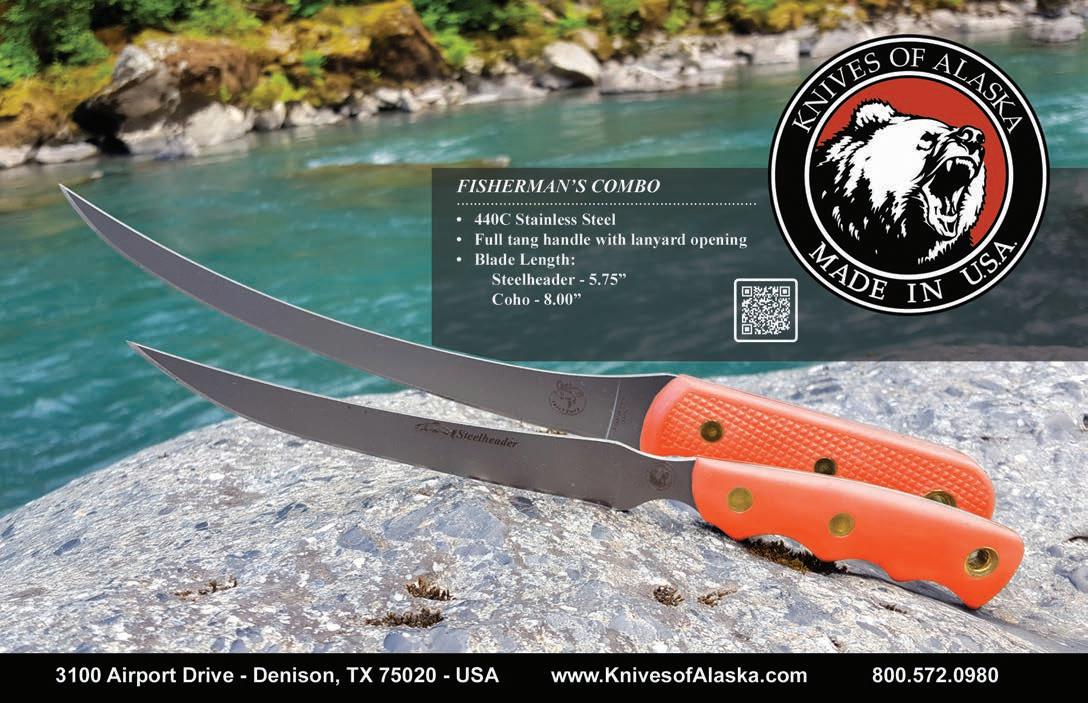
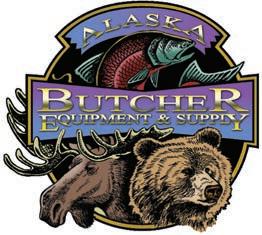




way away. That feeling was quickly overtaken by thinking that they had to rush the shot before the bear ran off or, worse yet, attacked them.
If you’re a seasoned hunter, you know bear attacks are rare. In fact, once they sense you, bears normally can’t run away fast enough. Not always, but usually. If you’re new to bear hunting, take a deep breath and relax. This is easier said than done. Experience is the best building block when it comes to bear hunting, or any hunting, for that matter.
Rushing a shot at any big game animal is a common reason for a miss, but it’s accentuated with bears. When a bear first appears, try to remain calm and don’t let the adrenaline rush interfere with your thought process. It doesn’t matter if you’re sitting in a treestand overlooking a bait, have a bruin spotted at 2,000 yards that you’ll eventually stalk, looking at one put up a tree by a pack of hounds, or are bringing one in using a predator call.
When you first spot a bear, focus on sizing it up. Most of us want to kill a big
bear. While bear meat is some of the best-eating wild game out there, not many hunters step into the woods with their sights set on a 125-pound bruin for the pot.
Studying parts of a bear to determine its size will help calm your nerves. Focus and look for a big back end that gyrates independently of the front as it walks. Study the head to see if it’s blocky with a triangular divot atop the crown and ears set to the side. Next, look at the front legs to see if the shoulder, elbow and wrist are all the same thickness. If these things check out, you’re looking at a big bear, and by focusing on them, you’ll become more calm and can concentrate on the most important part of bear hunting, shot placement.
When it comes time to shoot, wait for a bear to turn broadside. Never have I seen a big game animal expire as quickly as a bear that has a hole punched through both lungs. I’ve watched numerous black bears expire inside 10 yards with a bow and rifle. I’ve seen massive grizzly and brown bears die within a few steps of
being shot in both lungs. If the habitat in which you’re hunting is rugged with dense cover, you may never recover a bear that’s hit poorly.
A game changer for many bear hunters is using a scope with an illuminated reticle. I’ve shot many bears while using Trijicon scopes, and once you look through scopes like this, you’ll immediately get it.
Black bears are crepuscular and often shot amid heavy shadows and in low light conditions. Placing a thin, black scope reticle on a black target can make it challenging to locate the center of the vitals. But with an illuminated dot like those in reticles of the Trijicon AccuPoint, putting the crosshairs on the precise point of impact is easy and quick. Often, all you’ll be able to see is the illuminated dot against the black fur; no crosshairs. This calms the nerves and allows you to focus while picking the exact spot you want to hit.
Look through the scope and travel up the back of the bear’s front leg, then stop halfway up. When a bear is broadside, that shot will hit both lungs every time.
If bowhunting and you’re struggling with shot placement, try reaching full draw with all pins below the bear’s belly, then track up the back of the front leg, stopping when the pin you want hits the bear’s midsection. This is the highest-percentage bow shot for a bear standing broadside.
If rifle hunting and a quarteringaway shot is all you have, shoot for the offside shoulder and try to break it. A one-lung-hit bear can travel a long way, but a broken leg will slow it down. The humerus and shoulder blade of a bear are positioned far forward, so wait for the nearside front leg to be angled backwards, the offside front leg striding forward. A shot at this angle has a good chance of hitting both lungs and breaking the offside leg.
Avoid sharp quartering-toward-you shots on a bear. These usually find only one lung before the bullet enters the gut cavity, or a hit on big bones that inhibit penetration.

















If a bear is in a tree or at an uphill angle and you have a clear shot at the chest, don’t hesitate. Center the crosshairs between the legs and you’ll often hit the heart, lungs and break the spine. The same is true if a bear is sitting on its hind legs and facing away. Put the crosshairs between the midsection of the shoulders on the spine, and the bear will likely drop. This is how I dropped my biggest brown bear ever, a 10-foot, 9-inch giant, with one shot.
When it comes to bears, know your equipment and shoot it with confidence. The rest comes down to being patient and placing the shot exactly where you want it when the time is right. ASJ
Editor’s note: Want to learn how to skin and break down a bear? Order Scott Haugen’s popular DVD, Field Dressing, Skinning & Caping Big Game, at scotthaugen.com. Follow Scott’s adventures on Instagram and Facebook.


